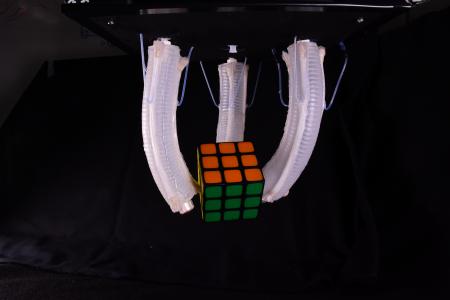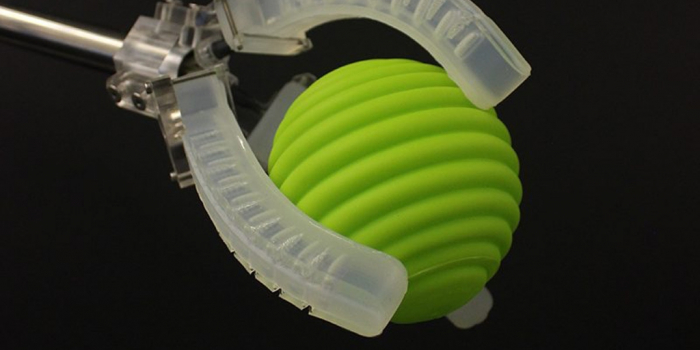Octopuses can move across various directions with high precision through their tentacles. Also, caterpillars can travel by coiling up and propelling themselves away from predators using inchworm movements. As a result, such organisms can flourish in their natural, unstructured habitat. But, on the other hand, creating robots with that level of fluidity has been tough.

However, a team of researchers has produced soft robots that are agile enough to handle a Rubik’s Cube using tensile jamming (vacuum-induced interaction across a bundle of tiny fibres). The research is published in Science Advances, led by Rebecca Kramer-Bottiglio, the John J. Lee Associate Professor of Mechanical Engineering & Materials Science.

The actuators – devices that convert energy into mechanical work are paired with fibres that instantly get stiff. “In contrast to robotic systems employing multiple actuators, which activate a subset of those actuators depending on the desired body configuration and behaviour, we have developed an inverted approach where a single actuator can attain many trajectories by patterning and controlling material properties at the actuator surface,” said Kramer-Bottiglio.
When expanded, most pneumatic soft actuators have predefined patterns that cause the actuators to only move in one pre-programmed direction. “But with fibre jamming, we can put these stiffness-tuning fibres around the actuator so you can change which part is stiff,” said Bilige Yang, lead author of the study. When the fibres are packed with vacuum force, they provide enhanced stiffness on various robotic sides.
“By selectively changing the stiffness around a cylindrical actuator, it’s able to move in basically any direction you want it to, which simulates what a biological system is able to do,” Yang said. “That puts us a step towards mimicking what nature can do.”

The core strength of typical robotic gripping devices is minimal. However, the tensile fibre technology gives the roboticists ample control for a dexterous gripping mechanism similar to a human hand. Each of the device’s robotic fingers has its own set of fibres, allowing it to perform a variety of movements. The robotic fingers displayed three different grabbing modes: A twisting motion, a “pinching grasp” for gathering up relatively small things, and an “outward-hooking” motion for gripping the interior of concave objects. For instance, the gripper picked up a Rubik’s cube, lifted a dish, and twisted the top off a jar using the three gripping modes separately.
The stiffness modes can switch in less than a second. With this agile nature, the researchers’ next target is to employ this technology to build shape-shifting sheets and dynamically modify robot surface curvatures.


